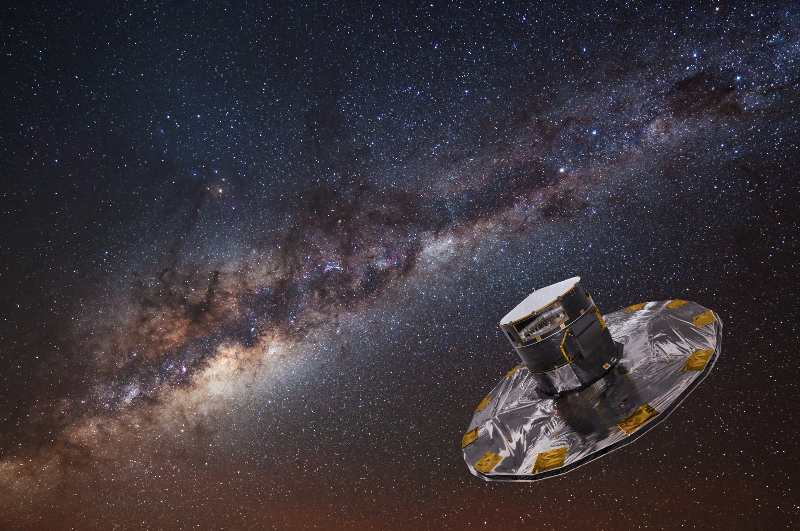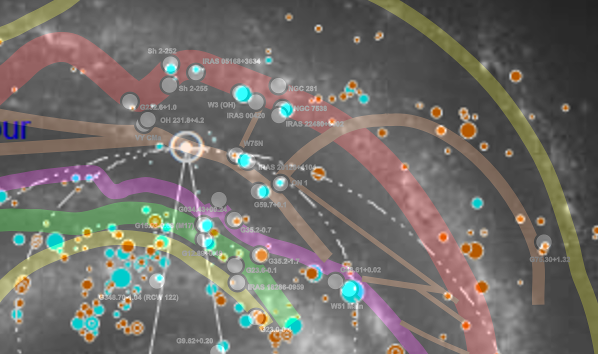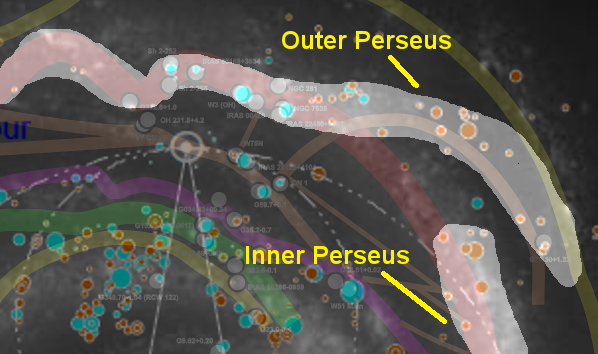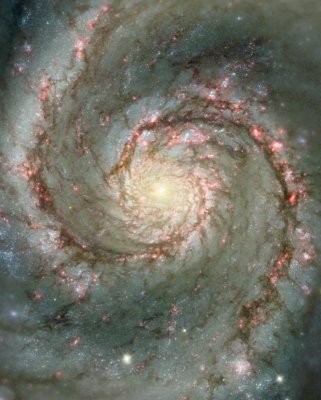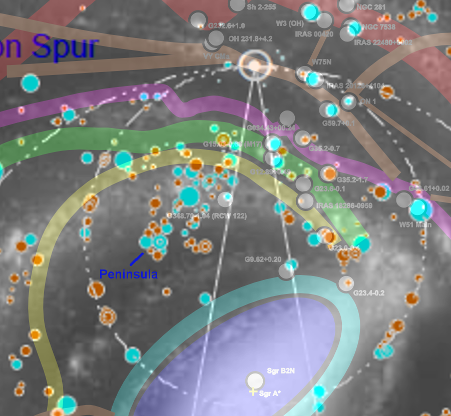Mind the Errors
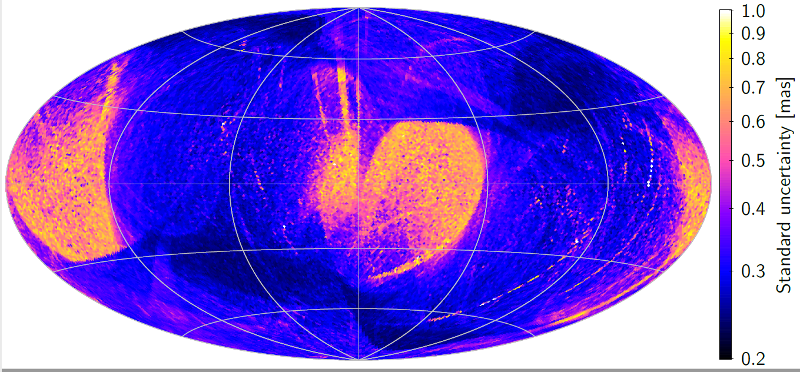
The first data release of the Gaia star mapping mission is coming out tomorrow. The release is creating a lot of understandable excitement but be careful! The Gaia scientists have already announced the parallax errors and for many of the first release stars they are similar to the previous Hipparcos mission, not the revolutionary accuracy expected by the end of the Gaia mission.
The limited accuracy in this first release is not because of a malfunction in the Gaia machinery but because the data is derived by combining the very first Gaia observations with the star positions and motions given in the older Tycho-2 catalog. This combination, the Tycho Gaia Astrometric Solution (TGAS), is in one way a bit of a data hack, but it does dramatically increase the number of stars with Hipparcos level accuracy from 100 thousand in the original Hipparcos catalog to about 2 million. This delivers a much more detailed map for the near solar neighbourhood (out to about 100-200 parsecs or 330-660 light years).
It is worth spending a bit of time looking at parallax error and how it determines the size of accurate star maps.
One reason that professional astronomers almost exclusively use parsecs when discussing distances within the Milky Way is that it is easy to convert parallax into parsecs. The formula could not be simpler. If we know that the parallax for a star is p arcseconds, then the distance d to the star in parsecs is given by the formula:
d = 1/p
However, even an incredibly accurate device like Gaia cannot measure parallax with complete accuracy and so both the Hipparcos and Gaia catalogs provide a standard error value measured in milliarcsecond standard deviations.
If you remember your stats classes, you will know that the odds of a correct value appearing within one standard deviation if the errors are normally distributed are 68%, within 2 standard deviations, 95%, and within 3 standard deviations 99.7%.
The Hipparcos median parallax error was about 1 milliarcsecond, so if you wanted to produce a map where the star positions were fairly accurate, you would likely go for two standard deviations, which in the Hipparcos case would be 2 milliarcseconds.
This accuracy standard puts strong limitations on the size of the map. A star with a distance of 100 parsecs has a parallax of 10 milliarcseconds. Using two Hipparcos standard deviations, this means that there is a 95% chance that a star with a measured parallax of 10 milliarcseconds falls within a real parallax of 10±2 milliarcseconds. This corresponds to a distance between 1000/(10+2) = 83 parsecs and 1000/(10-2) = 125 parsecs.
What this calculation shows is that if we use the Hipparcos data out to about 100 parsecs then we are 95% sure that the distances are accurate to about 25%.
Some Hipparcos stars have better than a 1 millisecond error, so if we filter to a list smaller than the 100 thousand stars, we can do better than 25% accuracy and even extend the map (with a loss of detail) to about 200 parsecs or so. If we go beyond about 200 parsecs, however, the parallax errors imply that the odds are remote that distance estimates are accurate for all but a tiny number of stars. So a detailed and reasonably accurate map using Hipparcos is restricted to a region between 100-200 parsecs from the Sun.
Although the overall accuracy of tomorrow's release will be similar to Hipparcos, the much larger number of stars (2 million) means that we can likely extend the map a little further using low error stars and still have significant detail. My hope is that we can even get some details as far away as the Orion nebula (400 parsecs). We'll know soon. My plan is to produce a face-on map as far out as the error values will allow.
Gaia will continue to produce regular data releases. Gaia DR2 will arrive by the end of 2017. So far the signs are still good that Gaia will ultimately meet its objectives and produce parallax data with far higher accuracy, allowing us to map the Milky Way out for thousands of parsecs. I can hardly wait!
(The parallax error map at the top of this blog post was made available by ESA before the Gaia release.)

